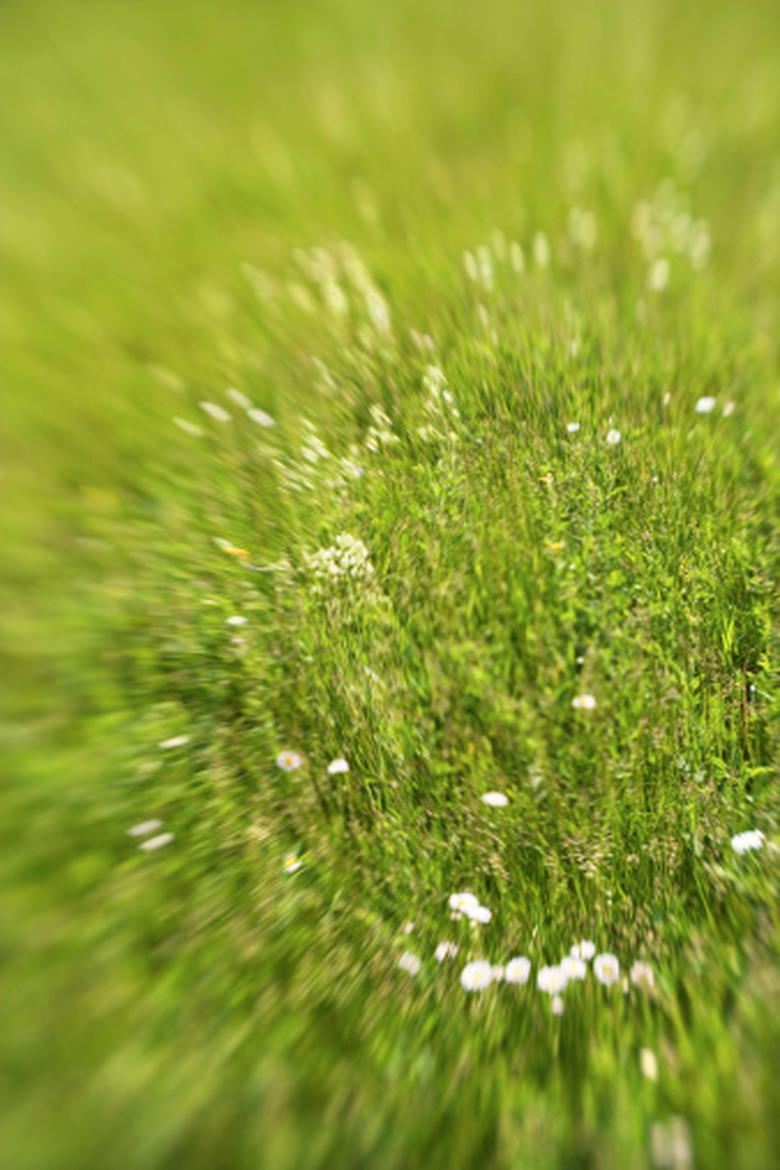Adaptations Of Grass
Grass is a member of the Graminae family of plants, subdivided into more than 6,000 species. Grass is a highly adaptable plant that can be grown as long as the crown, from which the growth of grass is organized, remains intact.
Climate
Different species of grass have adapted to grow in the different climates in which they are found. There are five common growing areas within the U.S.: cool/humid, warm/humid, cool/arid, warm/arid and the transitional zone. Certain grasses have adapted to grow well depending on the temperature of the region, soil moisture levels and humidity levels. The majority of grasses will grow in each region for a period of time until the climate makes it impossible for the grass to continue to grow. For example, the warm/arid region of the U.S. extending through the Southwest into Texas has seen the tall fescue type of grass, which has adapted to survive in temperatures reaching up to 110 degrees Fahrenheit.
- Grass is a member of the Graminae family of plants, subdivided into more than 6,000 species.
- For example, the warm/arid region of the U.S. extending through the Southwest into Texas has seen the tall fescue type of grass, which has adapted to survive in temperatures reaching up to 110 degrees Fahrenheit.
Seasons
Grasses have developed two general types of adaptations to meet the demands of growing seasons, which are cool and warm season grasses. Fescue is a type of grass that is generally regarded as a cool season grass, but has adapted to the warm seasons of the Southwest U.S. Other warm season grasses include Bermuda grass and St. Augustine grass, which have adapted to survive in warmer growing seasons of between 80 and 95 degrees Fahrenheit, becoming dormant when temperatures reach 50 degrees Fahrenheit. Cool season grasses, including bluegrass and ryegrass, have adapted to grow in cooler temperatures ranging from 65 to 75 degrees Fahrenheit, with dormancy happening when temperatures reach above 75 degrees Fahrenheit.
Growth
Grasses grow from the crown, which lies in a central area of the plant close to the surface of the soil. The crown lies within the stem of the plant, with the area below ground known as the rhizomes and the stem above ground called the stolon. Grass can adapt to being cut above or below the crown; the roots and stem can be cut but continue growing as long as the crown remains intact.
Transition
Certain grasses have adapted to survive in areas of the U.S. that are in a region known as the transition zone, which extends from New Mexico to the east coast of the U.S. Although ryegrass is known as a species that grows in cool and humid regions it has adapted to grow throughout the transition zone.
- Grasses have developed two general types of adaptations to meet the demands of growing seasons, which are cool and warm season grasses.
- Fescue is a type of grass that is generally regarded as a cool season grass, but has adapted to the warm seasons of the Southwest U.S. Other warm season grasses include Bermuda grass and St. Augustine grass, which have adapted to survive in warmer growing seasons of between 80 and 95 degrees Fahrenheit, becoming dormant when temperatures reach 50 degrees Fahrenheit.
